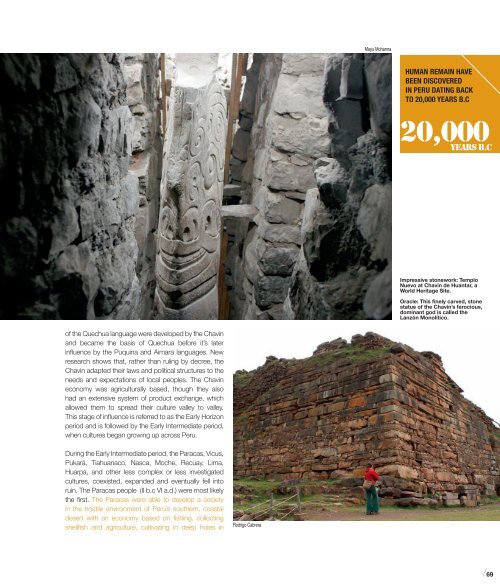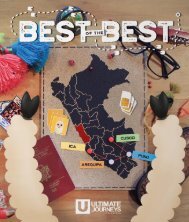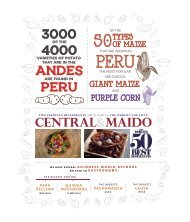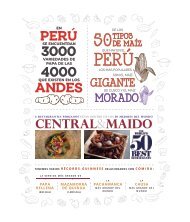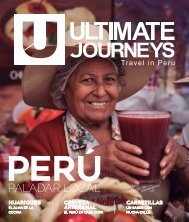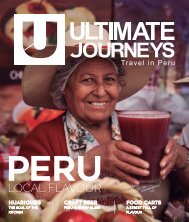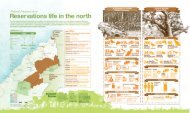UJ#5 Paracas
Create successful ePaper yourself
Turn your PDF publications into a flip-book with our unique Google optimized e-Paper software.
Mayu Mohanna<br />
HUMAN REMAIN HAVE<br />
BEEN DISCOVERED<br />
IN PERU DATING BACK<br />
TO 20,000 YEARS B.C<br />
20,000<br />
YEARS B.C<br />
Impressive stonework: Templo<br />
Nuevo at Chavin de Huantar, a<br />
World Heritage Site.<br />
Oracle: This finely carved, stone<br />
statue of the Chavin’s ferocious,<br />
dominant god is called the<br />
Lanzón Monolítico.<br />
of the Quechua language were developed by the Chavin<br />
and became the basis of Quechua before it’s later<br />
influence by the Puquina and Aimara languages. New<br />
research shows that, rather than ruling by decree, the<br />
Chavin adapted their laws and political structures to the<br />
needs and expectations of local peoples. The Chavin<br />
economy was agriculturally based, though they also<br />
had an extensive system of product exchange, which<br />
allowed them to spread their culture valley to valley.<br />
This stage of influence is referred to as the Early Horizon<br />
period and is followed by the Early Intermediate period,<br />
when cultures began growing up across Peru.<br />
During the Early Intermediate period, the <strong>Paracas</strong>, Vicus,<br />
Pukará, Tiahuanaco, Nasca, Moche, Recuay, Lima,<br />
Huarpa, and other less complex or less investigated<br />
cultures, coexisted, expanded and eventually fell into<br />
ruin. The <strong>Paracas</strong> people (II b.c VI a.d.) were most likely<br />
the first. The <strong>Paracas</strong> were able to develop a society<br />
in the hostile environment of Peru’s southern, coastal<br />
desert with an economy based on fishing, collecting<br />
shellfish and agriculture, cultivating in deep holes in<br />
Rodrigo Cabrera<br />
/69


